Do you have a mirror that is looking a little foggy, or perhaps those pesky streaks just won’t go away?
Not to worry, I’ve got you! I have found the most effective and budget-friendly solutions on how to clean a mirror that is hazy.
I am going to transform your hazy mirror into a sparkling, streak-free reflection.
Get ready to unveil the secrets of why mirrors become hazy, and I will share my best tips for maintaining an impeccably clean mirror, while also discovering eco-friendly and gentle cleaning methods.
We will provide step-by-step instructions on getting a streak-free mirror that shines like new again.
So, without further ado, let’s get started!
How to Clean a Mirror That Is Hazy Key Takeaways
Here is the quick process for cleaning a hazy mirror:
- Prepare the Cleaning Solution
- Apply the Solution
- Wipe and Dry
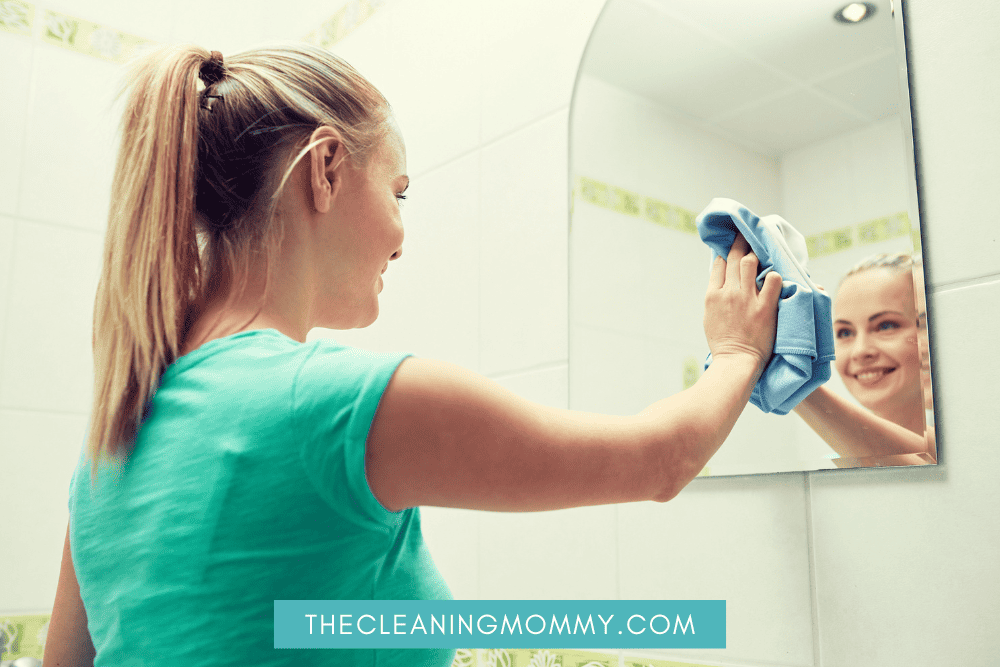
Step-by-Step Guide to Cleaning a Hazy Mirror
Adhering to these straightforward steps will result in a sparkling, streak-free mirror reflecting your commitment to cleanliness.
#1 Prepare the Cleaning Solution
First, prepare your cleaning solution by mixing your chosen cleaner with water, if necessary, in a spray bottle. This can be a commercial cleaner, a DIY solution like vinegar and water, or rubbing alcohol. The goal is to have a solution that effectively removes haze and grime without harming the mirror’s surface.
Once you have your cleaning solution ready, you can begin cleaning the mirror.
#2 Apply the Solution
Apply the solution to the mirror by spraying it onto a microfiber cloth or directly onto the surface, avoiding the frame and edges. Gently rub the solution onto the mirror, ensuring that you cover the entire surface and remove any stubborn stains or residue.
Be patient and persistent, as it may take a little elbow grease to achieve a streak-free shine.
#3 Wipe and Dry
Finally, wipe the mirror using an S-pattern or zig-zag motion from top to bottom. This technique helps prevent streaks and ensures that you don’t go back over areas you’ve already wiped.
To finish, dry the mirror with a clean, dry cloth to prevent streaks and residue. If necessary, repeat the process until your mirror is free of haze and shines like new.
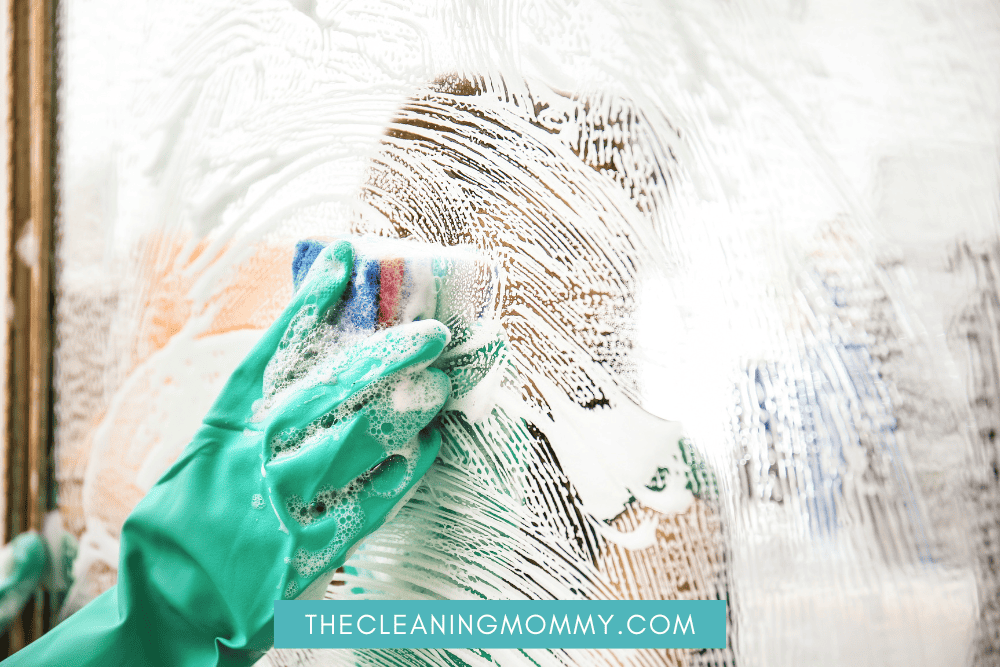
What Homemade Solutions Are There For Hazy Mirrors?
Mirrors are one of the most important pieces of furniture in our homes. Not only do they add a touch of style, but they also play an important role in our daily lives.
However, keeping a streak free mirror can be a challenge, as fingerprints, makeup, and dust quickly build up on the surface. If you’re looking for a way to clean a mirror and restore it’s original brilliance, here are four of my favorite homemade glass cleaner hacks.
How to clean a mirror that is hazy?
Well here are some brilliant DIY solutions that work wonders, will save money, and make it easier to clean your mirrors.
#1 How to clean your mirrors with rubbing alcohol
Pour a tablespoon of rubbing alcohol (or, isopropyl alcohol) into a small bucket or bowl. Or, you can also use an empty spray bottle. Apply the rubbing alcohol to the cloudy or grimy areas using soaked cotton balls or a microfiber cloth. Or, spray the alcohol on the glass mirror itself.
Avoid using a paper towel or cleaning rag, as this can leave lint behind.
Remove toothpaste splatters or hairspray residue from the mirror by scrubbing them. You will have to scrub quickly because the rubbing alcohol is going to dry very quickly once you actually start scrubbing.
Once you’ve cleaned everything, use a glass cleaner, spray it on the mirror, and wipe away with a clean cloth.
#2 How to clean your mirrors with vinegar
Instead of glass cleaner or isopropyl alcohol, use white vinegar to clean mirrors. Use a bowl with a few tablespoons of vinegar inside, and a microfiber cloth.
Rub the mirror with the cloth after it has been dipped into the white vinegar. Vinegar does not need to be soaked in the cloth, but it should be able to be rubbed on the mirror with little effort.
The cloudiness will disappear after several dips and wipes with vinegar. You can prevent streaks by rubbing the mirror in circular motions, or an “S” pattern starting at the top corners of the mirror and working downward. A sweeping motion can also help prevent streaks.
After it dries, cleaning cloths can be dipped in warm water and wiped over the clean mirrors to remove the smell. After that, wipe the mirror with another microfiber cloth sprayed with glass cleanser to remove streaks.
You may need to open a window to allow a little fresh air into the room to eliminate the vinegary smell.
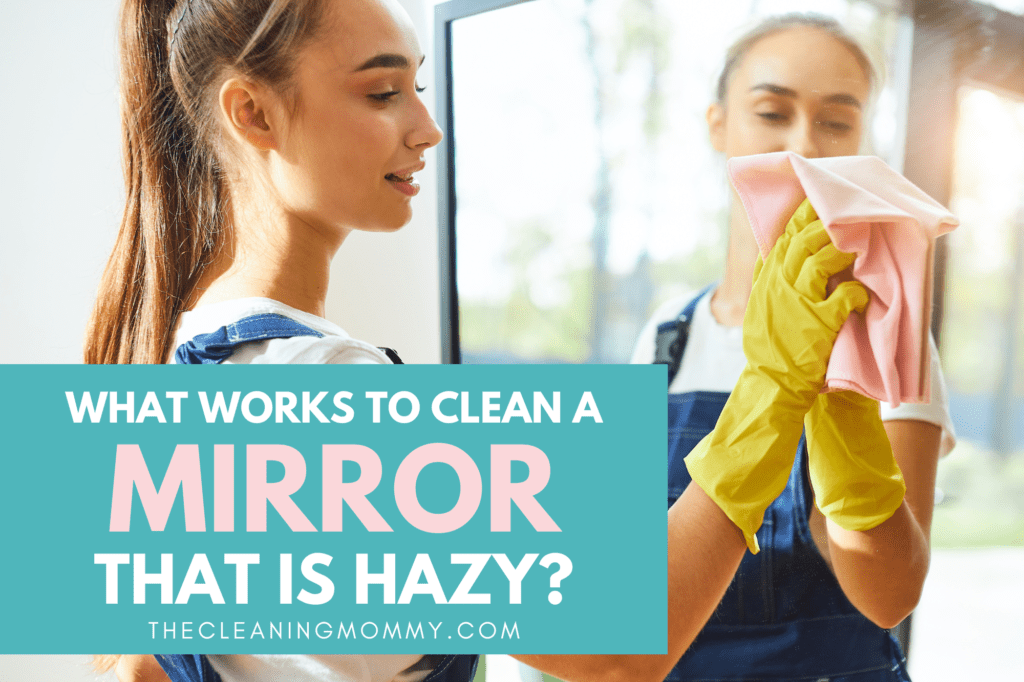
#3 How to clean your mirrors with shaving cream
Apply shaving cream to a clean microfiber cloth, about the size of a coin. Just a quick note, shaving gel doesn’t work as well as regular cream, as it leaves behind a residue.
The cream should be applied to the mirror using small circles. You should keep rubbing the shaving cream into the mirror until you see it absorbed. Make sure the mirror frame doesn’t get any shaving cream on it. It is possible to damage wood or delicate materials like wicker when shaving cream is used.
Circularly wipe the mirror with an all-purpose microfiber cloth that is clean and dry. After you have completely removed all the shaving cream from the mirror, wipe it again until the mirror is free of all traces of it. It may be necessary to repeat the process if the clean glass mirror is still cloudy in some places.
Also when you’re cleaning your mirror, avoid using newspaper because most old newspapers today use soy-based ink that streaks when wet.
#4 How to clean your mirrors with baking soda
Another lesser-known hack is baking powder or soda. This hack is the ideal solution to turn your grubby glass into sparkling clean windows and to clean mirrors .
A bit of baking soda can be sprinkled on a damp sponge or cloth and rubbed over the mirror. Wipe the mirror with distilled water using a clean cloth or sponge
After wiping the mirror with the soda paste, use a glass cleaner to further polish and shine the surface. For added sparkle, spray some vinegar onto a microfiber cloth and wipe down the mirror for an extra shine.
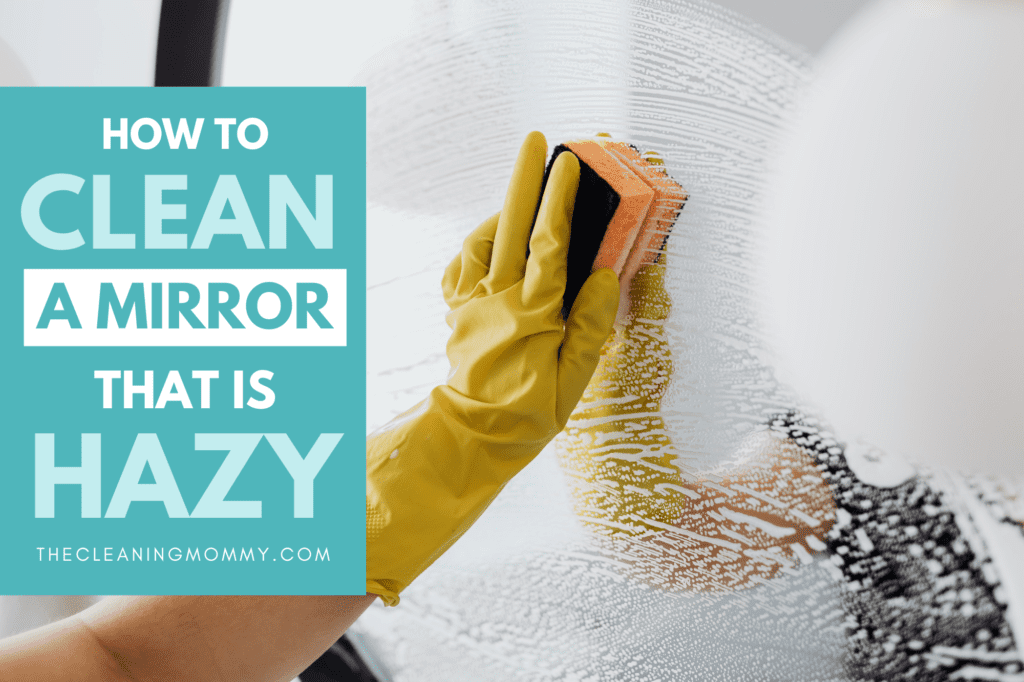
Tackling Stubborn Stains and Residue
Sometimes, mirrors can develop stubborn stains or residue that requires a bit more effort to remove. Fear not, as we have a few tricks up our sleeves to tackle even the most persistent hard water stains, lipstick marks, and marker ink.
Using a combination of vinegar, baking soda, and a soft cloth, you can easily remove any stubborn stains you come across.
Hard Water Stains
Hard water stains occur when mineral deposits from water are left on the mirror’s surface, resulting in chalky white or brown/rust-colored stains.
To remove these stubborn stains do this:
- Create a paste of baking soda and vinegar by mixing equal parts in a bowl.
- Apply the paste to the affected area and let it dry for a few minutes.
- Then, gently wipe off the paste with a damp cloth.
This method effectively removes hard water stains, leaving your mirror looking as good as new.
Lipstick and Marker Ink
Lipstick and marker ink stains can be particularly challenging to remove. However, by using rubbing alcohol or a soapy water solution, you can effectively clean these stains from your mirror.
To remove lipstick and marker ink, do this:
- Simply mix rubbing alcohol or a soapy water solution in a bowl and apply it to the mirror using a microfiber cloth or cotton ball.
- Gently rub until the stain is no longer visible, then wipe the mirror clean with a dry cloth.
With a little patience and the right solution, your mirror will be free of stubborn stains in no time.
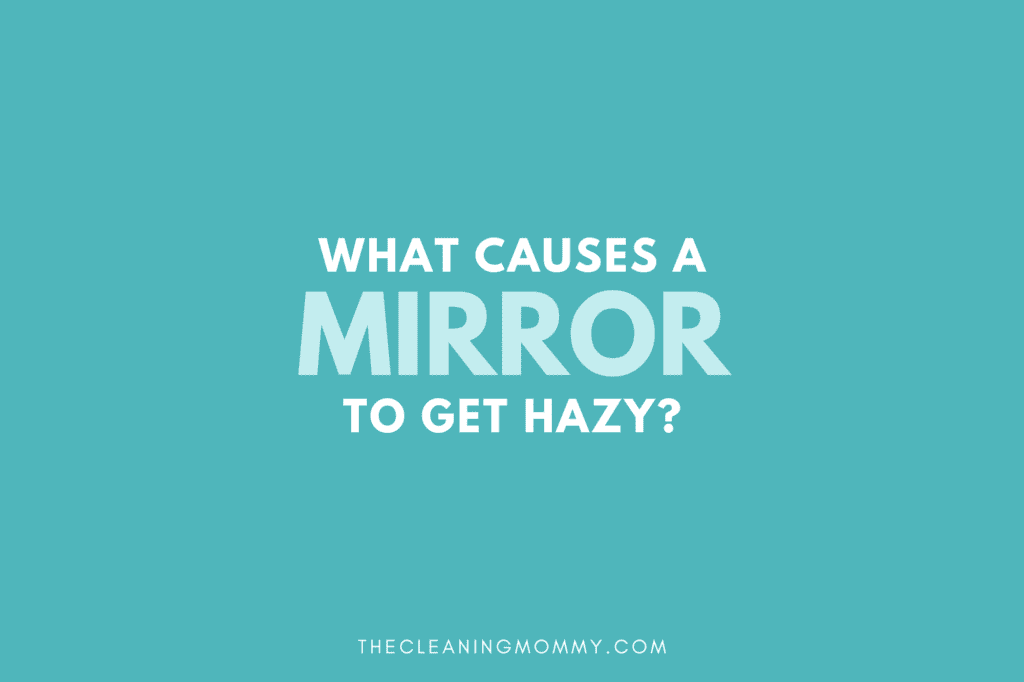
Why Do Mirrors Get Hazy?
The main cause of foggy bathroom mirrors is the accumulation of dust and other buildups on its reflective surface.
If left unchecked, this buildup can become embedded in the mirror glass, making the glass harder to clean and potentially causing permanent damage to its shine. Damage to the back of the mirror can also lead to a degradation of its reflective surface.
Regular cleaning habits and the avoidance of harsh chemicals will help you clean a mirror, maintaining it in its best condition.
Regular Cleaning
One of the keys to preventing haze and maintaining a clean mirror is regular cleaning. By cleaning your mirrors frequently, you can prevent the buildup of grime and residue that causes haziness.
Use a clean microfiber cloth and your chosen cleaning solution to gently wipe the mirror’s surface, ensuring a streak-free finish.
Avoiding Harsh Chemicals
Another important aspect of maintaining clean mirrors is avoiding harsh chemicals, such as bleach, which can damage the mirror’s surface and cause streaks or oxidation.
Instead, opt for gentler cleaning solutions like commercial glass cleaners specifically designed for mirrors or DIY alternatives like vinegar and water.
Haze caused by commercial glass cleaners
Another reason why mirrors might become cloudy is because of the cleaning products that we use. Some cleaning products can leave residues and other particles behind, and this cleaning solution can build up on the mirror along with dust and make it appear hazy.
In order to prevent foggy mirrors, it is important to clean them with appropriate cleaning products (like streak free multi purpose cleaners), effective glass cleaners, and techniques regularly. Protective coverings or keeping them away from high-traffic areas can also help minimize buildup and potential damage.
It is also important to handle mirrors carefully and avoid dropping or hitting them, as this can damage the back and potentially harm the reflective surface.
Haze caused by excess moisture
Finally, another reason why mirrors might become cloudy is the environment. If you live in an area with high humidity, this can cause the mirror to develop condensation. When this happens, it’s important to clean mirrors as soon as possible so that the excess water doesn’t have a chance to dry and leave behind a film.
Most mirror damage occurs in bathrooms as a result of moisture exposure. Shower steam can damage frames if the materials haven’t been sealed properly to prevent moisture from getting inside. The mirror can also lose its shine when splashes from brushing your teeth or similar activities are directed onto the surface.
In the process of drying, water droplets can carry mineral particles to the reflective surface and embed themselves in the mirror. Over time, this buildup can make the mirror appear foggy or tarnished. To help prevent damage to your bathroom mirror, be sure to clean mirrors with circular motions after showers and avoid splashing water directly onto the surface. And always leave your bathroom exhaust fan on for at least 20 minutes.
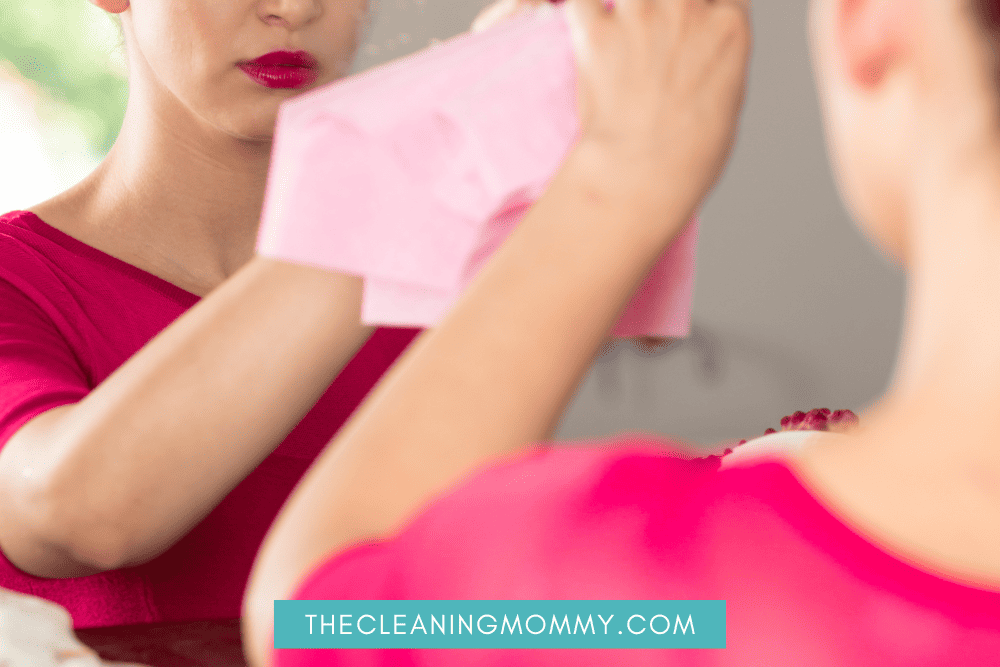
Additional Tips and Tricks
For those interested in elevating their mirror cleaning skills, we offer a few extra tips to keep your mirror gleaming.
Steam cleaning and using E-Cloths offer eco-friendly and cost-effective alternatives for maintaining a streak-free mirror.
Steam Cleaning
Steam cleaning is an effective method for cleaning mirrors without the need for chemicals. Here’s how to do it:
- Using a steamer with a squeegee attachment, loosen dirt and grime from the mirror’s surface with hot steam.
- After steaming the mirror, wipe it with a lint-free cloth or microfiber cloth.
- Progress from edge to edge and top to bottom to ensure a streak-free finish.
Steam cleaning not only offers an eco-friendly alternative to chemical-based cleaners, but it also provides a thorough and efficient cleaning experience.
E-Cloths
E-Cloths are reusable microfiber cloths that only require water for cleaning, providing an eco-friendly and cost-effective alternative to paper towels for maintaining a streak-free mirror. These specialized cloths are composed of highly absorbent microfibers that effectively remove dirt and grime without the use of harsh chemicals, making them a superior choice over traditional paper towel methods.
By using E-Cloths, you can keep your mirror looking its best while also minimizing your environmental impact.
Summary
In conclusion, keeping your mirror clean and haze-free is essential for an accurate reflection and a visually appealing bathroom. By choosing the right tools and cleaners, following a step-by-step cleaning process, tackling stubborn stains, and maintaining regular cleaning practices, you can ensure your mirror stays in pristine condition. Give these tips and tricks a try and watch your mirror transform into a sparkling, streak-free reflection.
Frequently Asked Questions
How do I get the cloudiness off my mirror?
Clean the stains off your mirror using rubbing alcohol on a cotton pad, followed by glass cleaner or a mixture of vinegar and water on a cloth. Avoid spraying directly onto the mirror to prevent tarnish marks.
Does Windex make mirrors foggy?
Windex is not recommended for cleaning mirrors as it can leave streaks and make the glass cloudy.
How to clean old mirrors?
To clean an old mirror, combine water, vinegar, and rubbing alcohol for a cleaning solution. Apply this to the surface and rub it off with a microfiber cloth. For tougher dirt or film, spray white vinegar onto the mirror and rub off with a shaving cream-covered cloth. Alternatively, apply rubbing alcohol on a cotton pad for stains, then use a glass cleaner or vinegar-water mix on a cloth.
What type of cloth is best for cleaning mirrors?
For the best results when cleaning mirrors, opt for a lint-free microfiber cloth as it removes dirt and grime without leaving streaks or lint.
Can I use vinegar and water as a homemade cleaning solution for mirrors?
Yes, you can use a mixture of equal parts vinegar and water as a homemade cleaning solution for mirrors.
Commercial Glass Cleaners
While commercial glass cleaners prove to be highly effective against hazy mirrors, selecting a product specifically tailored for glass surfaces is advised. Always read the label and select a glass cleaner formulated for mirror glass to ensure the best results.
One popular commercial cleaner is the Kärcher Window Vac, which guarantees streak-free results with minimal effort on window glass. To use the Kärcher Window Vac, simply spray the cleaner onto the surface and employ the vacuum to suction the dirt and grime.
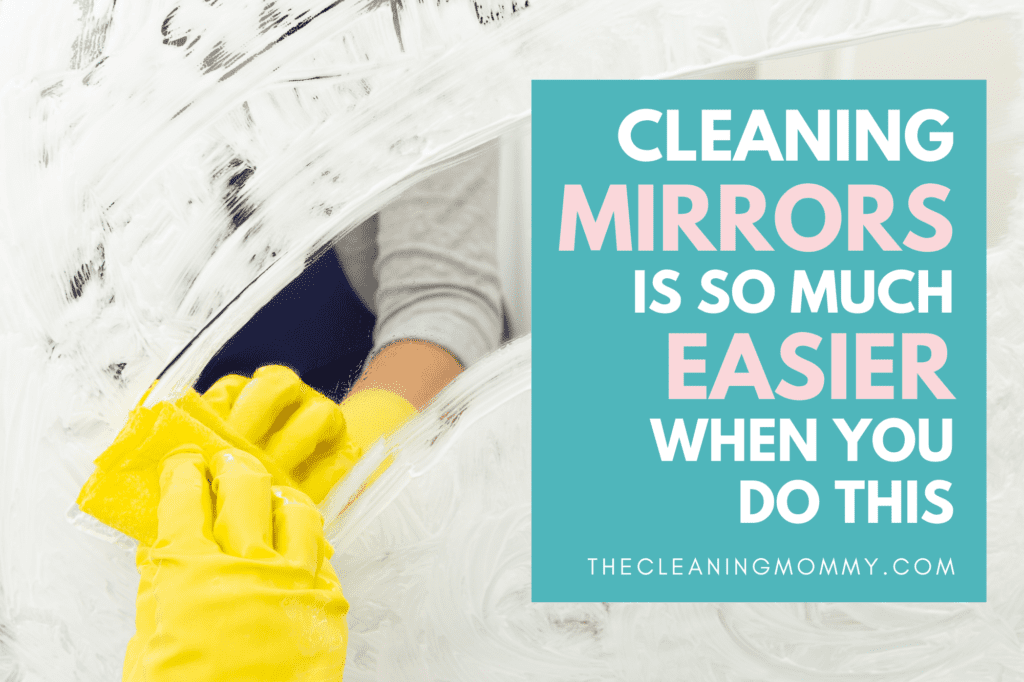
What Do I Do If My Mirror Is Still Hazy?
After trying all cleaning solutions and finding that the mirrors are still hazy, it may be time to consider replacing them. Additionally, if the problem is due to hard water, fixing that issue could also improve the appearance of the mirrors.
To remove stains and difficult spots, you can spot clean with the following instructions to clean mirrors:
1. Start by filling a spray bottle with equal parts white vinegar and water.
2. Spray the affected area with the vinegar cleaning solution and let it sit for several minutes.
3. Use an old toothbrush to scrub at the stain, applying more vinegar solution as needed for ultimate cleaning power.
4. Rinse well with distilled water and dry glass thoroughly to reveal a clean, stain-free surface.

Related Questions
How often should I clean mirrors?
Mirrors are an important part of any home, and they should be cleaned on a regular basis to prevent them from becoming smudged or stained. The frequency with which mirrors need to be cleaned will depend on a number of factors, including the size of the mirror, the type of glass, and the amount of dust and dirt in the room.
For example, large mirrors in high-traffic areas will need to be cleaned more often than small mirrors in low-traffic areas. In general, however, most mirrors can be safely cleaned once a week.
When cleaning a mirror, be sure to use a soft, clean cloth and gentle cleaner. Harsh chemicals can damage the glass, so it is best to avoid them if possible. With a little care and attention, your mirrors will stay clean and looking their best.
Is glass cleaner good for stains?
Glass cleaner is a great choice for treating spots and stains on clothing. It is particularly effective on tough stains like red wine or tomato sauce. To use glass cleaner on a stain, simply spray a small amount of cleaner to the stain with a spray bottle and rub it in with a clean cloth.
Let the cleaner sit on the stain for a few minutes before laundering the item as normal. For best results, pretreat the stain with glass cleaner before washing.
Glass cleaner is also effective on other surfaces, such as countertops and floors. Simply apply the cleaner to a cloth and wipe away dirt and grime. Glass cleaner is a versatile product to keep in a spray bottle that can be used throughout the home to keep surfaces clean and free of stains.
Other Cleaning Articles You May Like:
- How To Clean Pen Off Walls
- How To Clean Ghosting On Walls
- How To Clean A Glass Table
- Get clutter free countertops in no time!
- How to clean discolored vinyl flooring

Grainne Foley
Grainne Foley is a wife and mother of 2 great kids. During her 5 years of full time RV travel, Grainne learned to become very efficient at household chores, in order to make time for family adventures. Now, back in a house, she has continued to create tools and techniques to help others lighten the load of household organization and cleaning.
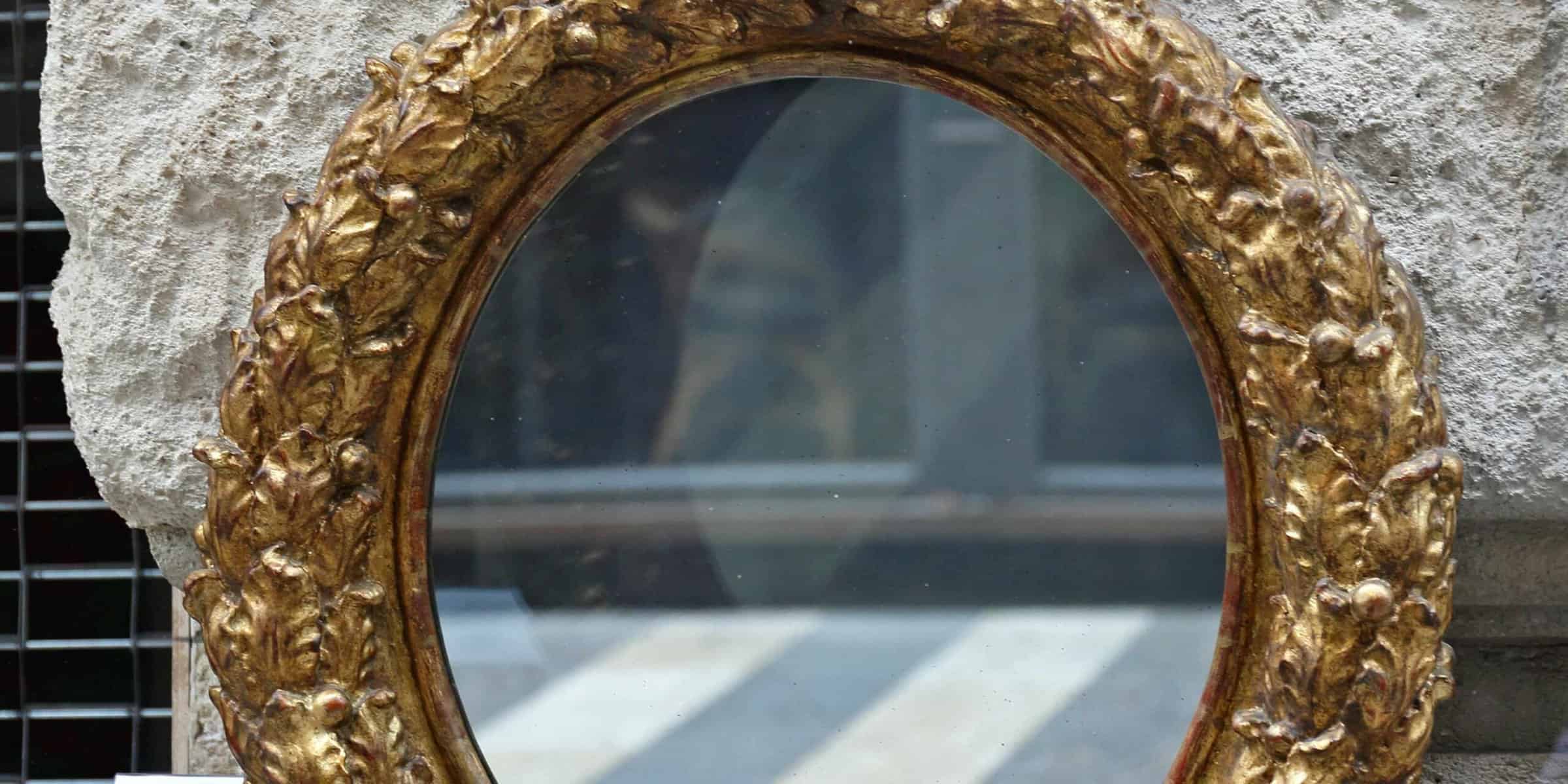
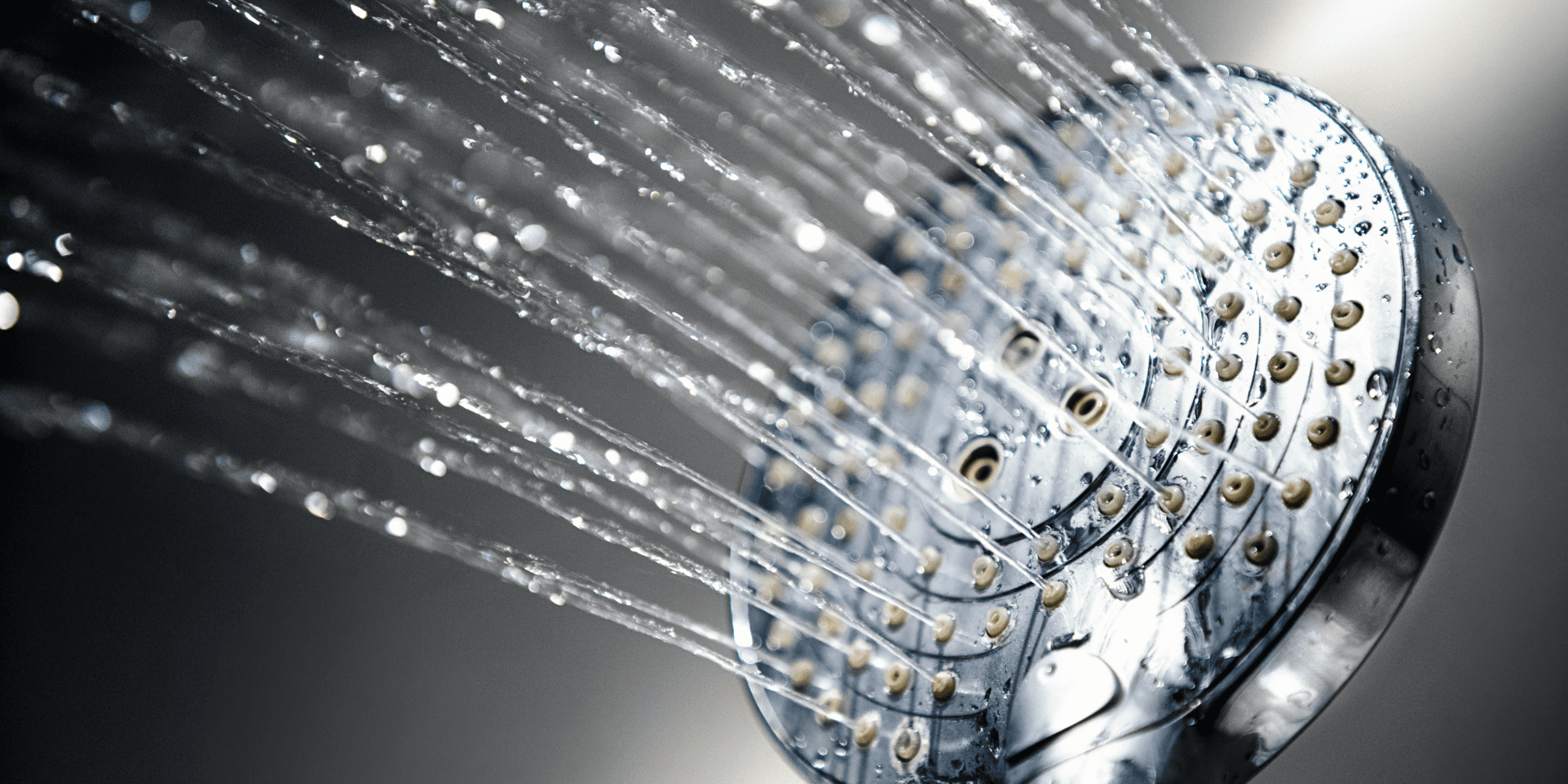
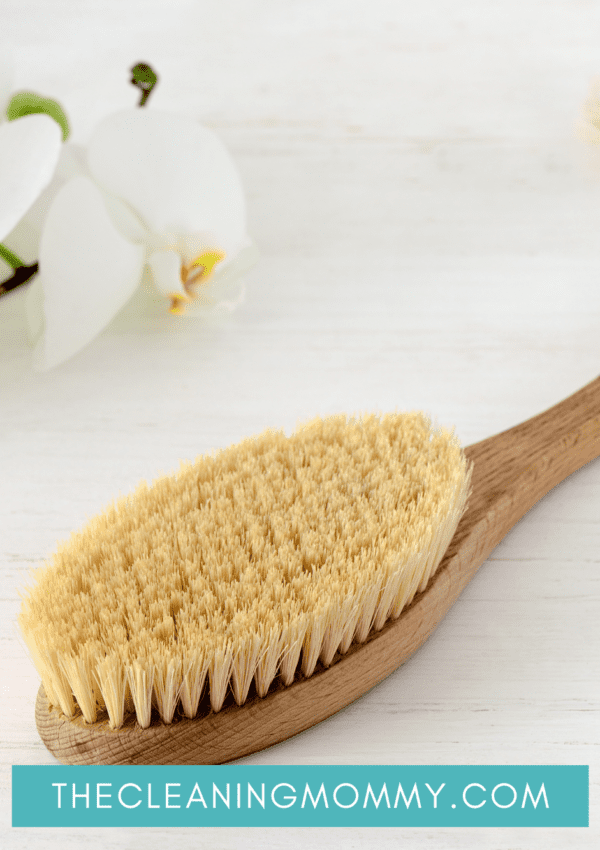

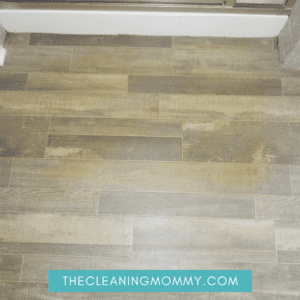
Leave a Reply